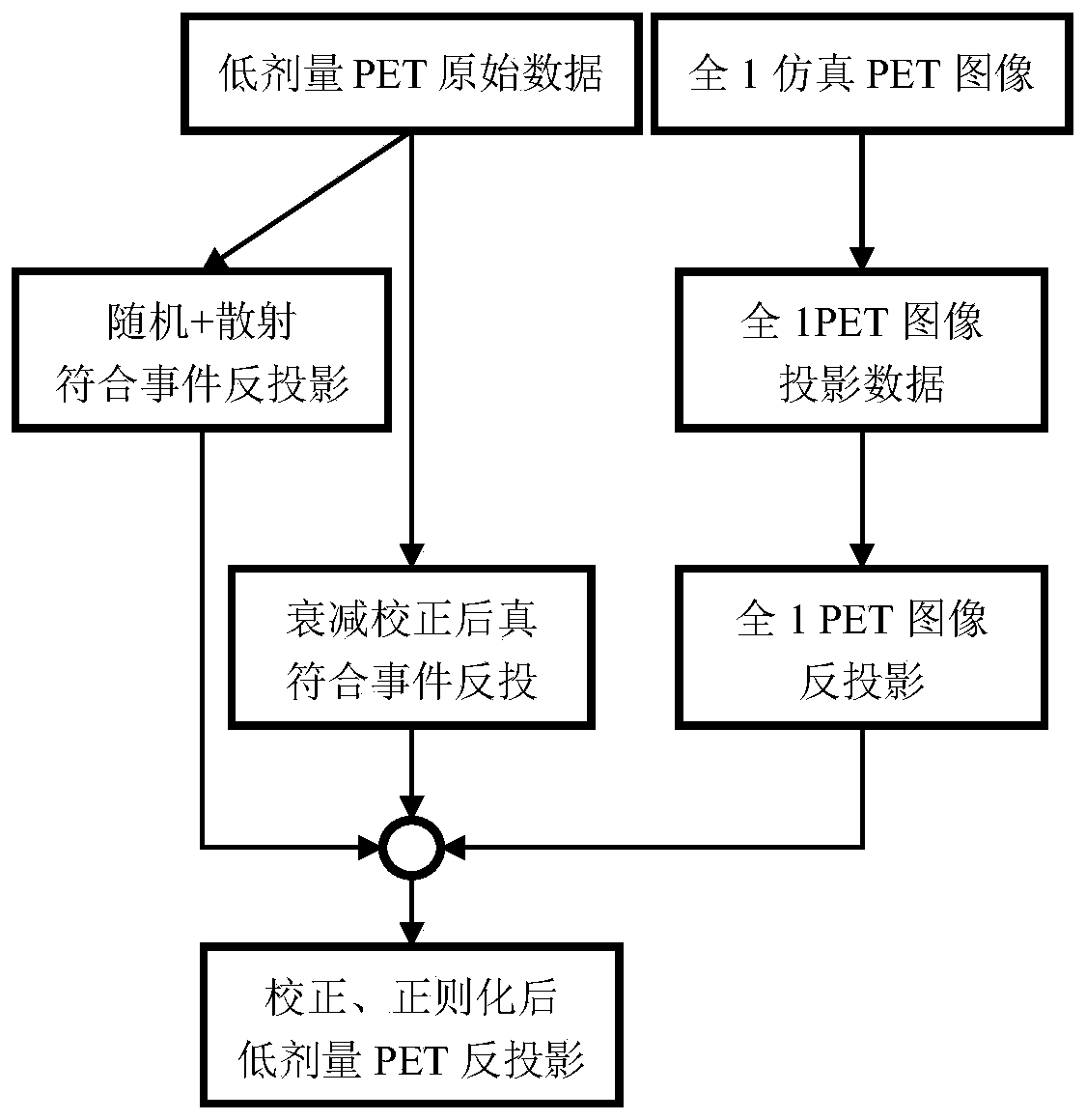Low-dose PET three-dimensional reconstruction method based on deep learning
A low-dose, PET scanner technology, applied in the field of medical imaging, can solve the problems of insufficient generalization ability of neural networks, performance bottlenecks, and inability to fully retain, and achieves suppression of insufficient generalization ability, reduction of required time, and high signal-to-noise. the effect of
- Summary
- Abstract
- Description
- Claims
- Application Information
AI Technical Summary
Problems solved by technology
Method used
Image
Examples
Embodiment Construction
[0020] The content of the present invention will be further elaborated below in conjunction with the accompanying drawings and embodiments.
[0021] The low-dose raw data received by the PET scanner is a three-dimensional sinogram formed by the projection of the PET image through three-dimensional X-ray transformation. Since the three-dimensional sinogram not only includes the axial plane projection, but also includes the oblique plane projection passing through the axial plane, it has the characteristics of large amount of data and highly redundant information, and the direct use of neural network to fit the mapping between sinogram and PET image is limited. Due to the limitations of computer computing and storage capabilities, it is difficult to realize. The present invention proposes a lossless back-projection method for a three-dimensional sinogram, the flow chart of which is as follows figure 1 Shown:
[0022] (1.1) The low-dose PET raw data is processed by attenuation ...
PUM
 Login to View More
Login to View More Abstract
Description
Claims
Application Information
 Login to View More
Login to View More - R&D
- Intellectual Property
- Life Sciences
- Materials
- Tech Scout
- Unparalleled Data Quality
- Higher Quality Content
- 60% Fewer Hallucinations
Browse by: Latest US Patents, China's latest patents, Technical Efficacy Thesaurus, Application Domain, Technology Topic, Popular Technical Reports.
© 2025 PatSnap. All rights reserved.Legal|Privacy policy|Modern Slavery Act Transparency Statement|Sitemap|About US| Contact US: help@patsnap.com



